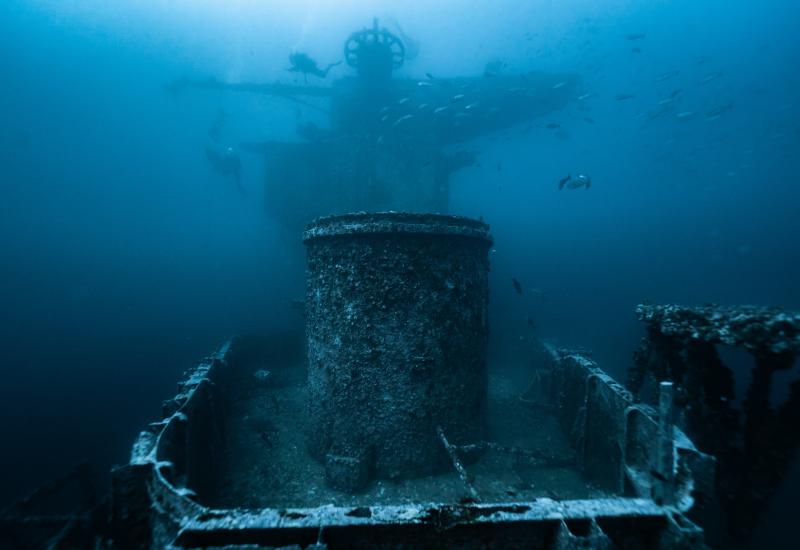Six Wrecks to Dive at Night
Diving after dusk isn’t for everyone. Sure, the water might feel colder, as air temperatures typically drop with the sun, and that extra dip cuts into happy hour. But there’s a reason so many divers jump at the chance to pull on an often still-wet suit to explore the black water—especially when here’s metal involved.
The who’s who of the underwater world changes dramatically at night. Hunting, stalking and hiding are all in the mix. Wrecks make after-dark navigation super simple, allowing divers to stay mesmerized by what unfolds. Those wheelhouses, rooms and passageways create habitat—and hunting grounds.
The nonstop action of a night dive trains us to see in a different way. To focus our attention on the bigger picture of just how wild, how unpredictable the sea and every one of its animals can be, every night.
1. Thistlegorm, Red Sea, Egypt
Macro Mania
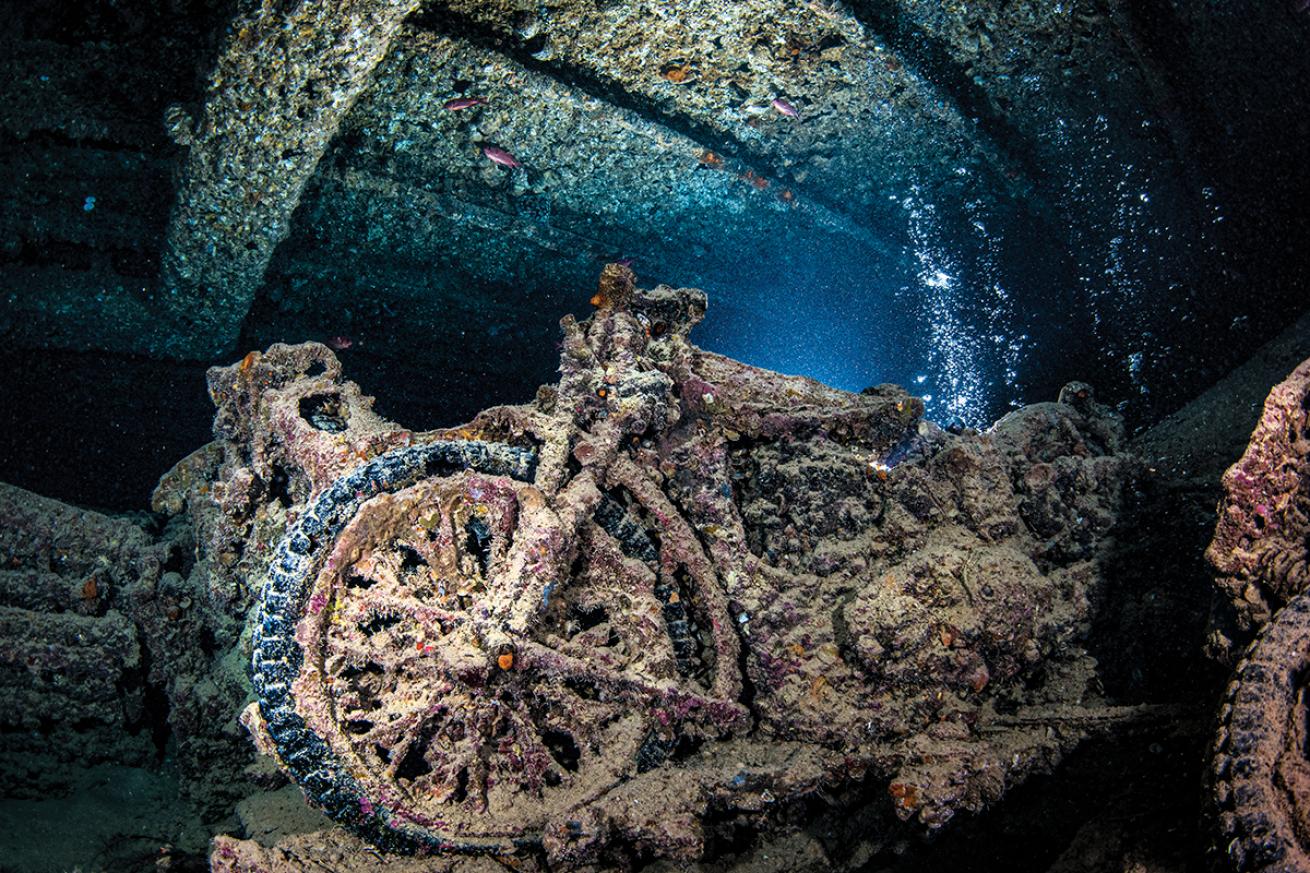
Brook PetersonLiveaboards often offer not one but two night dives on the Thistlegorm, after dusk and pre-dawn.
It takes a lot to draw attention from the jeeps, trucks and other artifacts on board the SS Thistlegorm, the most famous World War II wreck in the Red Sea. But come night, it’s the macro life that steals the spotlight.
Drop onto this 419-foot British armed merchant navy ship, and one can’t help but find leagues of nudibranchs, blennies and hawkfish. “There’s so much macro life, but you would never notice any of it during the day because there’s too much to see,” says photographer Alex Mustard, who has logged more than 100 dives on the ship.
On this night dive, Mustard typically shoots macro, honing in on smaller critters nestling among the windlasses, anti-aircraft guns, deck railings and stairs of the top deck—all encrusted with the corals and sponges that come with being underwater for just shy of 80 years. “Everyone who dives the wreck at night says there is more life on it than they realized,” he says. That includes the fish life.
During the day, batfish, fusiliers and other fish funnel in the water column, keeping their distance. By night, they all crowd over the top and inside, along with turtles, who flock to the structure for a safe place to overnight. While the turtles are bedding down, the lionfish are warming up. “The lionfish have learned that a diver’s torch is a great way for them to hunt,” says Mustard.
By night, the Thistlegorm delivers, big time. It comes with just one caveat. The area where the wreck sits is exposed to strong tidal currents. There can be no current at all, or a lot.
“On a night dive, if the current is running, it can be quite intimidating,” says Mustard. “Not so much when you’re on the wreck, but the ascent and descent.” In other words, divers should assess their mental fortitude, and their training, before taking the plunge. “Currents always feel stronger in the dark,” Mustard adds.
Dive this Wreck: Aggressor Adventures
2. Shinkoku Maru, Truk Lagoon, Chuuk
Little Corals Everywhere
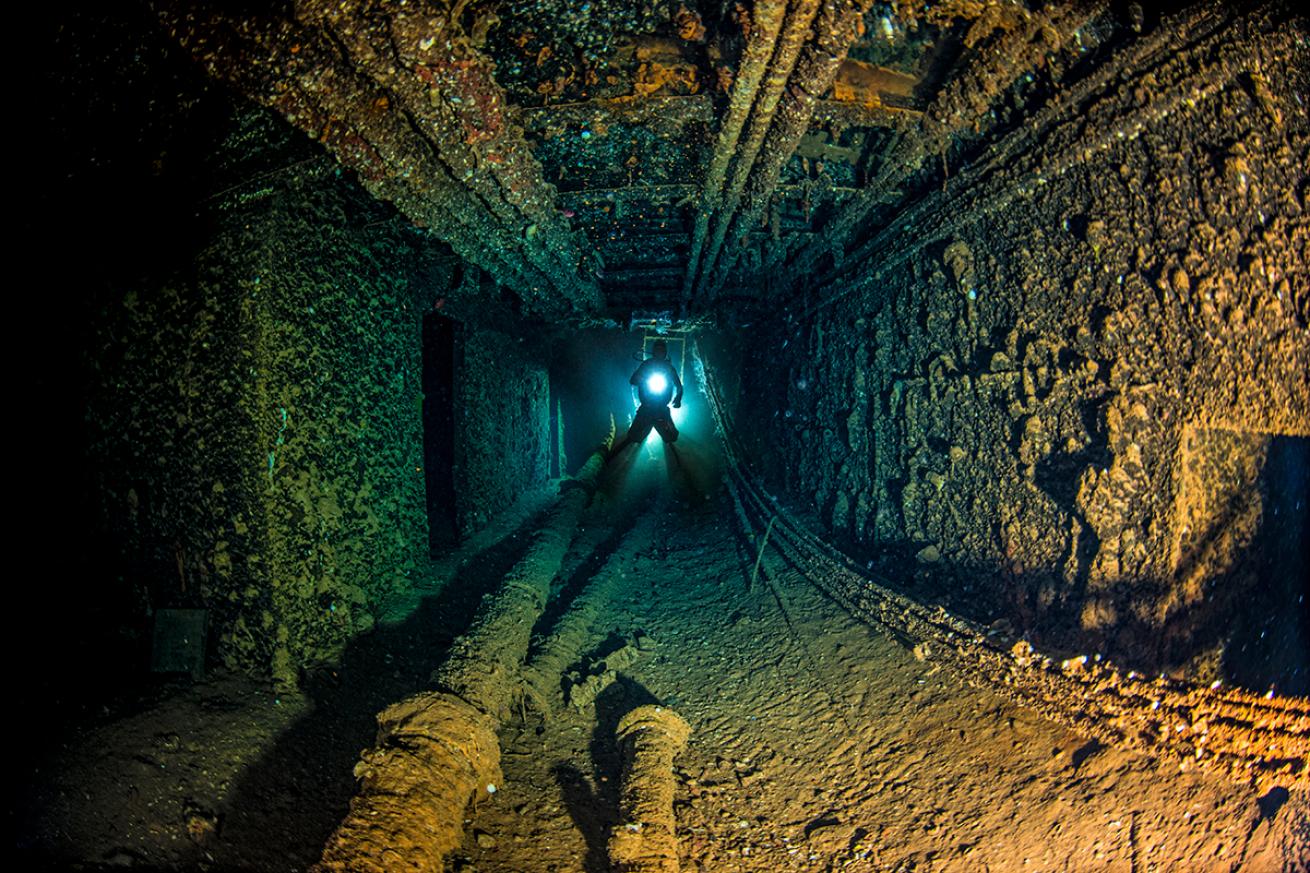
Aaron WongShinkoku Maru's shallow depth allows more time to explore—and to appreciate its range of brilliant colors.
The Shinkoku Maru is easily the best night dive on Truk,” says Brandi Mueller, a captain of the liveaboard vessel M/V Odyssey, of the World War II vessels of this central Pacific island.
To start with, Shinkoku, a 500-foot tanker, is one of the shallower wrecks of this underwater ghost fleet, some 40 in number. For liveaboard divers logging three to four dives each day, that depth equals a much longer bottom time. The ship sits slightly at an angle, with the bow at 100 feet to the sand, and the stern at 130 feet. The top deck is in the 40-foot range, and supports two superstructures as well as a mast climbing to 20 feet.
But the more seductive reason to choose Shinkoku is color.
“The Shinkoku has the most marine life—tons of orange cup coral all over the place, like orange fingers sticking out everywhere. Then there are the pinks and purples of the soft corals, and all of it is out feeding at night.”
It’s an endless field of tentacles, all swaying in the surge and reaching out to harpoon dinner. War on a tiny scale.
But there’s more. “The ship has tons of anemones and anemonefish, and while they ball up, they do it two times during the day, not at night, so you get to see all that too,” says Mueller. Night is also the better time for spotting nudibranchs and flatworms, as a dive light trains your focus.
Moving beyond the brightly painted hull, the water column above the wreck sees its share of action, including sharks, thanks to a light that Odyssey drops on a hang bar at 15 feet.
“This attracts reef sharks in the mist,” says Mueller of the safety-stop treat. On occasion, a manta has been spotted in the blackness—rare, but possible.
Overall, the marine life of this wreck exceeds expectation, for any wreck, really, but also perhaps because this side of the wreck is often overlooked; the Shinkoku is better known for having one of the world’s best engine rooms, as well as impressive galleys and holds full of wartime artifacts, from shoes to bolts of cloth.
Divers typically come to witness one story, but sometimes it’s the one that we’re surprised to watch unfold that’s all the more riveting.
Dive this Wreck: Truk Odyssey
3. MS Rhone, Salt Cay, British Virgin Islands
A Haunting Legend
First you have to decide which half of the RMS Rhone you want to take on in the dark. The stern delivers sure-thing turtle encounters and longer bottom times, but the bow—deeper—is more intact, providing a deliciously haunting relief. Let’s start with the stern.
“Four resident hawksbills are always here—they wedge themselves underneath the hull,” says Kit Aaron, instructor with We Be Divin’, based on Tortola.
This section of vessel, blasted apart by the explosion of the boiler, created a yard of wreckage— and ample habitat for critters. The bow comes with its own allure.
“Night diving the bow is spectacular,” Aaron says. This half, including the crow’s-nest to the bowsprit, has remained relatively untouched—it still appears ready to steam into the dark ether.
It can be a chilling sight at night, but it’s not one that he finds haunting. However, he’s had many guests share that they’ve had goosebumps when exploring this stretch of the vessel. Sunk in 1867, taking 123 lives in the process, it’s perhaps the most infamous wreck in the Caribbean.
Enter from amidships, where the vessel split wide open, and you’re inside what feels like a cave. Only, you’re not alone.
Because the bow sits in deeper water, it’s there that divers will more likely experience drop-ins from bigger animals, including eagle rays and reef sharks.
4. Kittiwake, Grand Cayman, Cayman Islands
A Game Changer
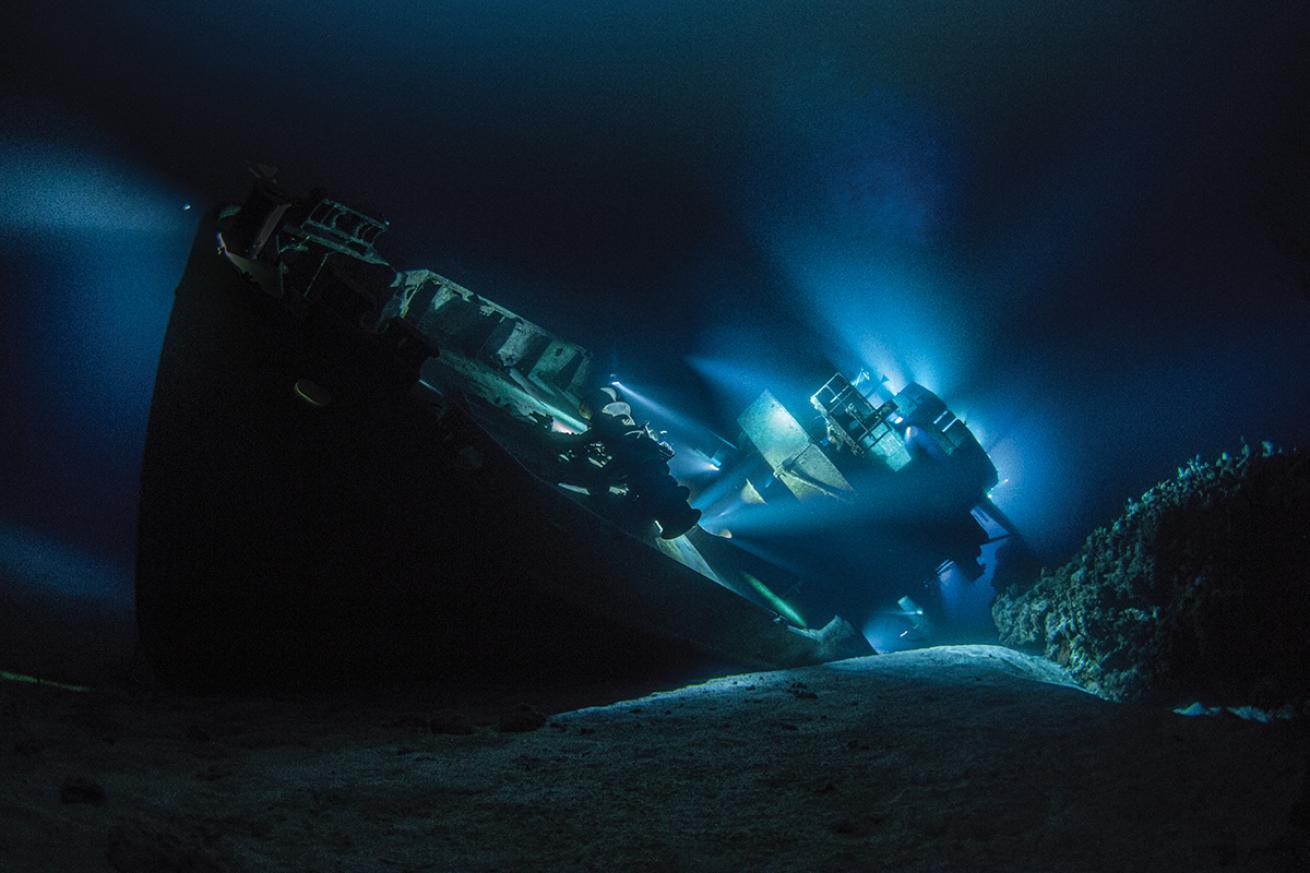
Tony LandA beautiful—and popular—wreck at any time of day, Grand Cayman's purpose-sunk Kittiwake at night is out of this world. In gin-clear water, it is an easy beginner experience.
Say the word “night”—never mind the wreck—and a lot of divers opt out. “People get intimidated by wrecks and night diving—really just wreck diving in general,” says Jo Mikutowicz, owner of Divetech scuba center on Grand Cayman.
Kittiwake changes people’s perceptions. Quickly. Officially known as the USS Kittiwake, it’s one of the Caribbean’s newer wrecks, down as of 2011, and as such one of the best examples of a purpose-sunk vessel, with wide swaths of the hull removed along with doors and a host of other potential hazards.
“This wreck is large and open everywhere you go,” says Mikutowicz, an instructor who teaches wreck diving and night diving. “There’s lots of life, and it’s not so scary,” she says.
“Once you get in there, you forget that you are on a wreck, with all that is happening.” One of Mikutowicz’s favorite encounters took place in the galley when she happened upon an octopus on a walkabout. “I followed him through several rooms as he was jumping around the floor and several walls.”
Octopuses on the wreck are common by night—but rarely seen by day. Keeping them company are eels, including chainlink morays, also rarely sighted by day. Goliath groupers tuck themselves into the wreck to spend the night. “I scanned my light over him and almost missed him—I thought he was a big piece of metal,” she says of a goliath she spotted there recently.
Perhaps best of all, this site enjoys calm conditions year-round, thanks to its spot on the west side of the island. Divetech, one of few operators offering guided night dives here, includes it twice a month. “Of course, once we put it out there, it becomes really popular,” she says. For good reason: an easy, beginner experience with typically superb in-water clarity, and all the excitement one would hope for from a wreck in the dark.
Dive this Wreck: DiveTech
5. Captain Dan, Pompano Beach, Florida
Livin’ the Fish Life
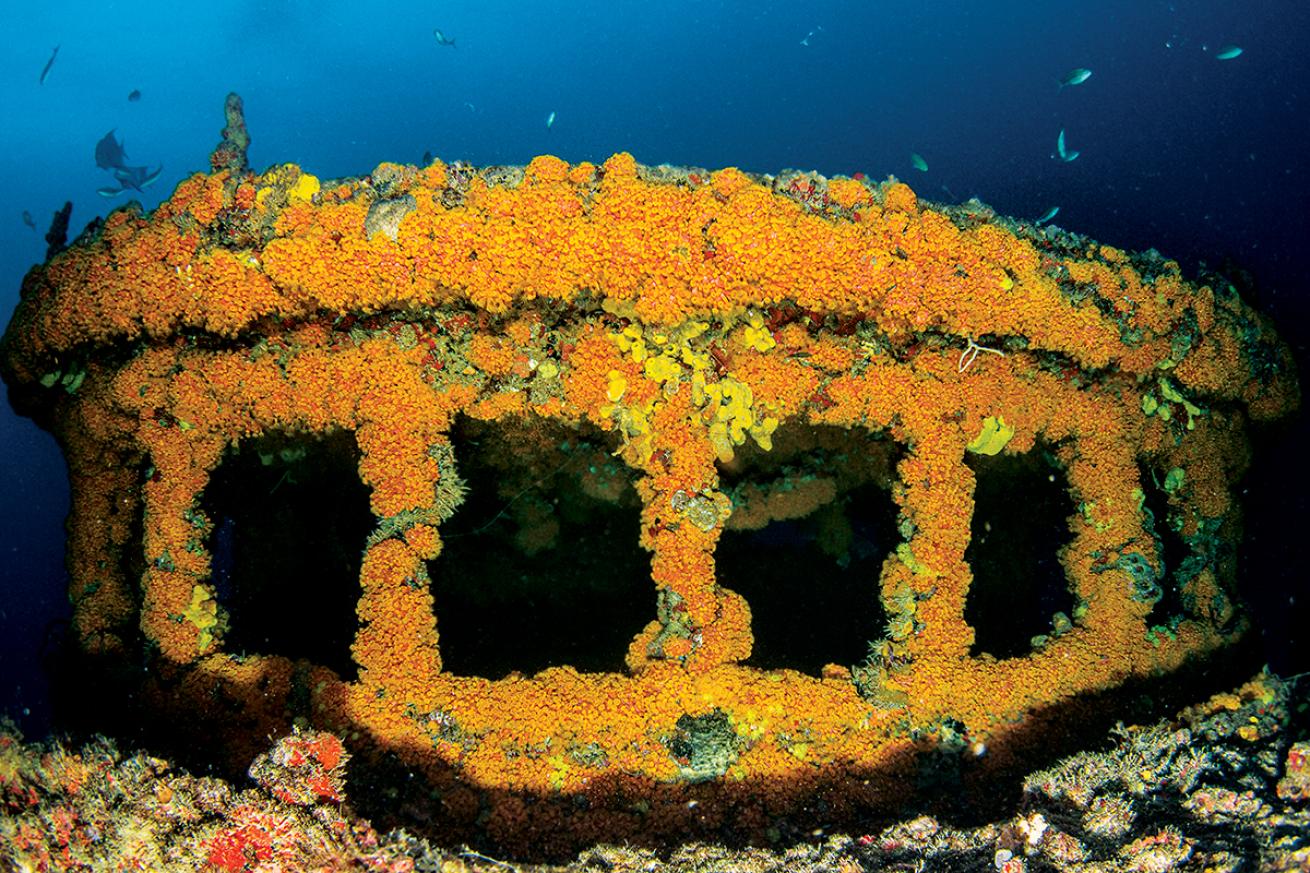
Lureen FerrettiNighttime lights reveal Captain Dan's glorious colors.
The Captain Dan buoy tender wreck off the coast of Pompano Beach, Florida, lists to port—delightfully disorienting—but this isn’t what thrills those who take on this night dive.
It’s the fish life. Namely, the barracuda.
“They like to dart back and forth in front of your light,” says Shawn Wakefield, a divemaster with Scuba Network, a local operator offering this night dive by request.
“It can be unnerving when you have a 4- to 5-foot barracuda doing that. They can be relentless.”
Plus, the sheer number of barracuda gathering on this 175-foot wreck impresses. Up to 200 at a time school on its decks.
“Their jaws sit open the entire time,” says Wakefield. “That’s an eerie feeling.” By night, divers also cast their light upon goliath grouper, some 4- to 6-feet long, as well as black grouper in the distance.
And eels. Lots of eels.
Wakefield regularly sees five to six green morays, often free-swimming on the top deck.
The marine life is a big draw, as is the fact that the ship is one of the shallower among the eight wrecks in this area, known as the Rodeo Divers Artificial Reef. Captain Dan sits at 115 feet at the sand, with the wheelhouse starting in 70 feet of water, allowing experienced divers on nitrox roughly 45 minutes of bottom time.
Purpose-sunk in 1990, the wreck was made accessible for penetration thanks to large holes cut into the metal, and doors and hatches removed. (However, heading inside at night is always best left to those with the proper training and who know the interior well.)
About that list to port, which resulted from a series of storms that tipped the ship sideways. “One time, I penetrated through a passageway and came up through an opening in the wheelhouse. When I turned around and looked at the stern, I completely couldn’t tell the wreck was tilted on its side,” says Wakefield. “I thought I had vertigo. I knew my equilibrium was off.”
Unlike the adrenaline charges from the constant barrage of barracuda, this feeling fades quickly, especially for those who remember their dive briefing. Should that fail, there’s relief in knowing that just 15 minutes separate the boat from Hillsboro Inlet, and the assuredness of dry land.
Dive this Wreck: Scuba Network
6. YO-257, Oahu, Hawaii
Serious Moonlight
“A lot of intriguing things come out at night,” says Shelly Rofrits, president of Dive Oahu, of the YO-257 wreck found off Oahu.
This wreck in particular, a 174-foot U.S. Navy yard oiler, sees a wide variety of life in large part due to its position near a drop-off, where a sometimes swift current assures the food supply. Rofrits’ favorite is the Spanish dancer, the largest nudibranch in the world, growing up to 16 inches. “They’re incredible—they can get as big as teacup saucers, and they’re always in motion.”
Another critter to watch for is eels. Hawaii is home to several, including the snowflake eel, a white-and-black variety with delicate yellow mottling, and the zebra moray, with alternating bands of white and an orangeish-black. Most commonly seen here is the whitemouth moray, brown with a constellation of white dots.
All can be found free-swimming and on the hunt. On occasion, divers witness their successes. “I’ve seen eels grab crabs and turn their bodies into a knot and just peel that crab apart,” she says. Commonly sighted is the Samoan—aka mangrove—crab, growing up to 7 pounds. There’s also the seven-eleven crab, with bright red circles on its carapace. Sponge crabs collect in big numbers, as do slipper lobster.
Night divers can often orient themselves here even without a light. “If it’s clear and you have a full moon, you have a view of the wheelhouse when looking back at the stern. How much light there is in the water still blows my mind,” Rofrits says.
Dive this Wreck: Dive Oahu

